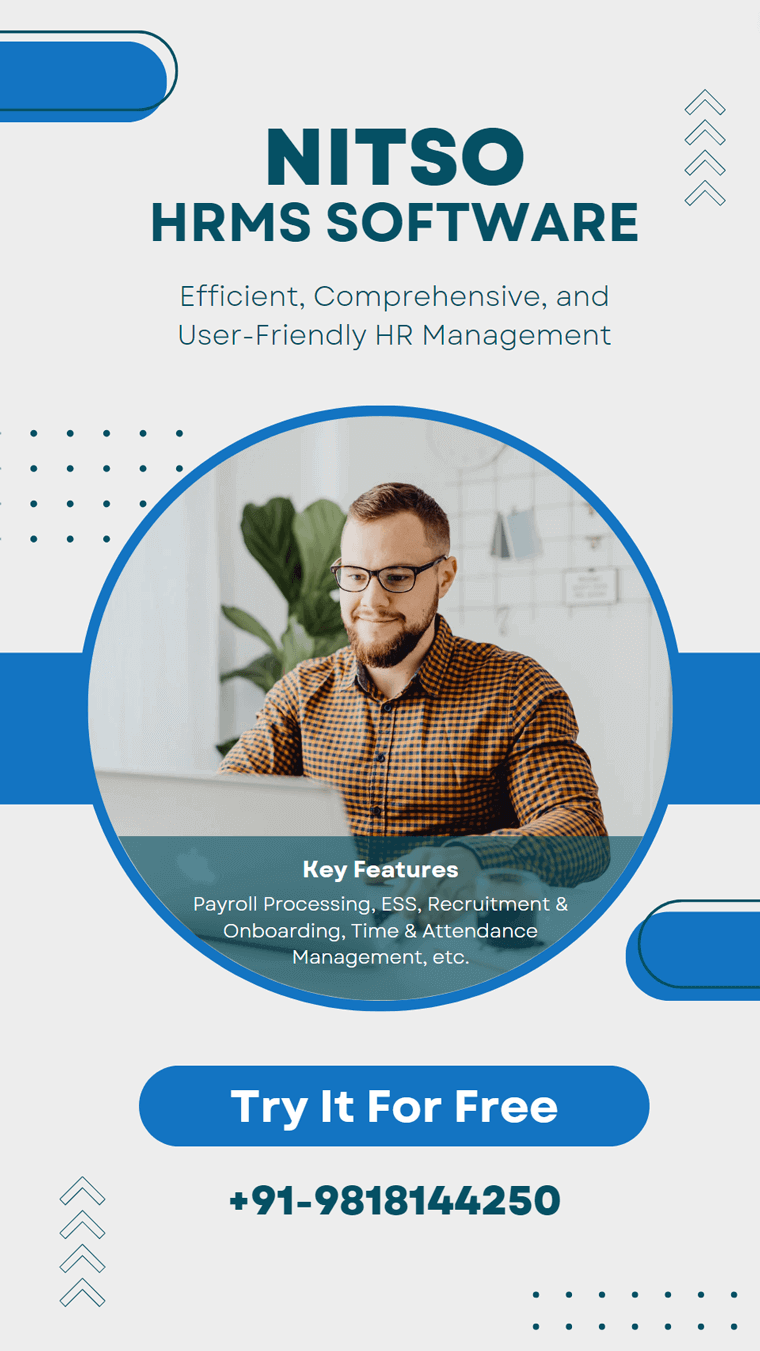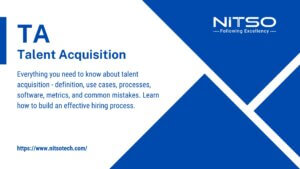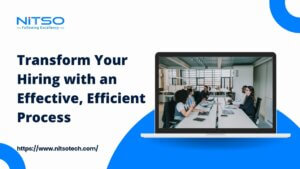According to a recent study, companies that excel at talent acquisition and hiring are more than twice as likely to outperform their peers financially. But with today’s competitive job market, hiring the right talent is harder than ever. A strategic and well-executed talent acquisition process is critical for companies that want to attract and onboard the best candidates.
This article will explore 7 key strategies to dramatically improve talent acquisition and hiring. Implementing these strategies can help companies hire faster, lower recruiting costs, find candidates that align with company culture, and ultimately drive business growth by bringing in top talent.
Table of Contents
What is Talent Acquisition?
Talent acquisition refers to the comprehensive process used by companies to source, recruit, assess, select and onboard qualified candidates to fill open roles. More than just recruiting, talent acquisition is a strategic function focused on building and sustaining a strong talent pipeline to meet both current and future hiring needs.
The talent acquisition team develops effective strategies and deploys various tactics to attract top candidates, whether they are active or passive job seekers. Their goal is to identify and hire skilled employees who not only fill the immediate hiring demand but also possess the potential and cultural fit to grow and succeed long-term with the organization.
Talent acquisition incorporates everything from employer branding, job posting optimization, and candidate relationship management to interviewing, evaluations, offers and onboarding. When executed well, talent acquisition results in quality hires, faster hiring velocity, lower recruiting costs, and enhanced employer brand perception.
7 Game-Changing Talent Acquisition Strategies to Build an Unstoppable Team
Strategy 1: Clearly Define the Role You Want to Fill
The first step in effective talent acquisition is clearly defining the role you want to fill with specific responsibilities and qualifications. Take time to identify the hard and soft skills that are required for success in the role. Outline the day-to-day duties and expectations. Determine the personality traits and work styles that would fit your company culture.
A well-defined job description helps attract the right candidates with relevant backgrounds. It enables you to evaluate applicants accurately against the role requirements. With a clear understanding of the ideal candidate, you can tailor your recruitment efforts and screening process. Defining the role upfront also leads to better hiring manager alignment and an improved candidate experience.
Precisely defining the open position saves time and resources spent on unsuitable candidates. It forms a strong foundation for the rest of your talent acquisition process. Take the time to be thoughtful and thorough in detailing the required qualifications, responsibilities, and competencies for each role.
Strategy 2: Build Your Employer Brand
One of the most important talent acquisition strategies is to build a strong employer brand that attracts top talent. Your employer brand goes beyond your company’s products or services – it represents your values, culture, employee experience, and reputation as an employer. Building a compelling employer brand is critical for reaching passive candidates who aren’t actively job searching but would be interested in opportunities with the right company.
Start by identifying what makes your organization unique and desirable as a workplace. Emphasize your company culture and how it aligns with top talent’s values. Showcase your career development opportunities, training programs, and internal mobility. Leverage employee testimonials and stories that humanize your employer brand. Promote your employer brand consistently across all platforms – your careers page, job postings, social media channels, and employee advocacy.
A differentiated employer brand helps your company stand out among the competition. It enables you to engage talent directly with your purpose and environment. With an authentic and transparent brand, you can build awareness and consideration among high-quality candidates. This leads to more qualified applicants, better candidate experience, and lower recruiting costs. In today’s labour market, your employer’s reputation is Everything. An appealing employer brand is foundational to talent acquisition success.
Strategy 3: Leverage Employee Referrals
One of the most effective yet underutilized talent acquisition strategies is to encourage employee referrals. Hiring referred candidates leads to lower turnover rates, faster ramp-up times, and higher employee satisfaction. Employees often refer people from their networks who are a great cultural fit.
To leverage employee referrals, first educate employees on the types of roles you are seeking to fill. Provide clear instructions for them to submit referrals. Offer compelling referral bonuses or rewards to incentivize them. At many tech companies, referral bonuses can be $2,000 or more for specialized roles. Promote successful referrals on your intranet or newsletter.
Make the referral process simple through an internal portal or tracking system. Ensure all referrals are quickly followed up on. Make sure referrals are expedited through your recruiting process.
Employee referral programs are a win-win. Your employees are more engaged as brand ambassadors. You widen your talent pipeline with qualified, pre-vetted candidates. This allows you to rely less on expensive job board postings and external recruiters. An employee referral program should be a core component of any leading talent acquisition strategy.
Strategy 4: Partner with Educational Institutions
Forming partnerships with colleges, universities, boot camps, and other educational institutions allows access to entry-level talent with the latest skills. This should be a key part of your talent acquisition strategy.
Build relationships with career services and talent acquisition teams at targeted schools. Offer to host events, sponsor student groups, or speak on campus. Establish an internship program to pipeline future full-time hires. Attend career fairs to source and interview students directly.
Promote job openings by sharing postings, engaging on LinkedIn, or leveraging your employee alumni networks. Consider sponsoring capstone projects, hackathons, or competitions to identify top talent.
An academic partnership enables recruiting high-potential candidates before they actively search for jobs. It raises awareness of your employer brand on campus. Students gain valuable experience and your team gets first-hand evaluation of candidates.
Campus recruiting requires investment but yields a pipeline of graduates with relevant skills and qualifications. Treat interns well so they enthusiastically refer peers. Educational partnerships are invaluable for accessing specialized roles like engineers, data scientists, and developers. Make academic talent sourcing a consistent element of your broader talent acquisition strategies.
Strategy 5: Utilize Social Media for Recruiting
Social media platforms like LinkedIn, Facebook, Instagram, and Twitter are transforming talent acquisition. Embracing social recruiting should be a key priority in your talent acquisition strategies.
Start by creating or refreshing company pages on all major platforms. Provide consistent employer branding and showcase your culture. Share employee-generated content and testimonials. Engage followers by commenting, liking, and posting job openings. Leverage targeted advertising and sponsored content.
Use talent communities on LinkedIn to connect with passive candidates in niche roles. Join relevant industry groups and forums to build your brand. Recruiters can search profiles and reach out directly via InMail.
Follow hashtags like #opentowork to identify candidates. Track social media analytics to refine your approach.
With so many professionals on social media, it provides access to both active and passive candidates. It enables real-time interaction and networking at scale. The candidate experience is also more transparent through social.
A comprehensive social media recruiting strategy expands your talent pool and enhances your employer brand. Dedicate resources to manage your social channels and interact with followers. Social platforms are now a go-to channel for modern talent acquisition.
Strategy 6: Use Modern Applicant Tracking Systems
Implementing a modern applicant tracking system (ATS) can significantly improve recruiting and candidate management. This technology should be a central component of your talent acquisition strategies.
An ATS centralizes all candidate information and interactions in one place. It provides pipelines of resumes from integrated job boards. Built-in tools allow customized screening questions and structured interviews. Automated task reminders ensure follow-ups with candidates.
Robust reporting provides insights into the source of hire, time to fill, and other recruiting metrics. Many ATS platforms offer AI-powered capabilities like automated candidate matching and removal of biases.
With an ATS, recruiters can work more efficiently. Hiring managers gain insight into the candidate pipeline. Candidates have a positive experience through quick responses and updates.
Transitioning to an ATS requires change management and training. But the long-term benefits include consistency, organization, compliance, and scalability. As your hiring needs evolve, the ATS can scale up.
A modern ATS solution is indispensable for any growing organization. It brings much-needed structure and efficiency to the recruitment process. To hire top talent consistently, investing in an applicant tracking system is a must.
Strategy 7: Continuously Improve the Candidate Experience
The candidate experience is a crucial but often overlooked element of talent acquisition strategies. With today’s transparency, how your company treats candidates spreads quickly. Ensuring a positive experience is essential.
First, examine your end-to-end process through the candidate’s eyes. Identify pain points and remove any unnecessary steps. Set SLAs for responding to applicants and interview follow-ups. Provide timely application status updates.
Make applying as easy as possible through mobile-friendly quick apply forms. Use video and chatbots to screen candidates efficiently. Schedule interviews at convenient times.
During interviews, ensure the process is organized, consistent, and reflective of your culture. Take time to explain the next steps and set expectations.
Follow up with personalized rejection notices. Offer to provide feedback when asked. Treat referrals and former employees with extra care.
With a stellar candidate experience, you build goodwill with potential future hires. Candidates become brand ambassadors. This enhances your talent brand and aids recruiting efforts. An excellent candidate experience signals how your organization truly values people. Make it a cornerstone of your overall talent acquisition strategies.
Article you might be intrested in: Reducing Candidate Drop-Off
Key Takeaways
In today’s competitive hiring landscape, organizations must constantly refine their talent acquisition strategies to attract and retain top talent. By implementing the 7 strategies outlined in this article, companies can dramatically improve their recruiting and hiring outcomes. An effective, data-driven approach to talent acquisition is essential for building high-performing teams and driving business success in the modern workforce.
FAQs Related to Talent Acquisition Strategies
What are the benefits of having a strong talent acquisition strategy?
A solid talent acquisition strategy helps attract and hire top talent faster, lowers recruiting costs, reduces turnover, and builds a high-performing workforce to drive business success.
How can we improve our employer brand to aid talent acquisition?
Focus on showcasing your company culture, values, career growth opportunities, benefits, and employee experiences authentically. Leverage employees as brand ambassadors. Be consistent across all platforms.
What is the best way to source great candidates?
Utilize a mix of sourcing channels like employee referrals, social media, job boards, recruiter networks, and building partnerships with schools. Cast a wide net.
How can we enhance the candidate experience during hiring?
Set up an organized, transparent, and candidate-centric hiring process. Use modern tools to communicate and update candidates. Provide feedback when possible.
How do you effectively assess and evaluate candidates?
Use structured interviews, standardized scorecards, skills assessments, and reference checks to make data-driven evaluations. Focus on skills, cultural add, and future potential.
What technologies can improve talent acquisition?
Applicant tracking systems, AI-enabled recruiting tools, digital interviewing platforms, chatbots, and automated screening/assessments.
How can we measure the effectiveness of our talent acquisition efforts?
Track metrics like source of hire, time to fill, cost per hire, quality of hire, new hire retention and performance, and recruiting process efficiency.
What recruitment strategies should we prioritize?
Employee referrals, campus recruiting, leveraging your brand/social media presence, building a talent pool, and improving candidate experience.








0 Comments